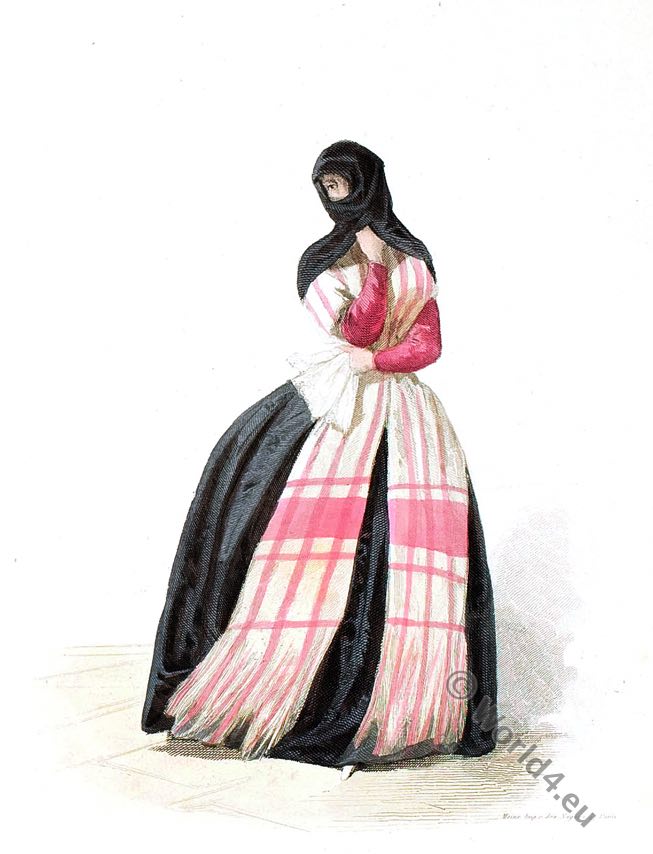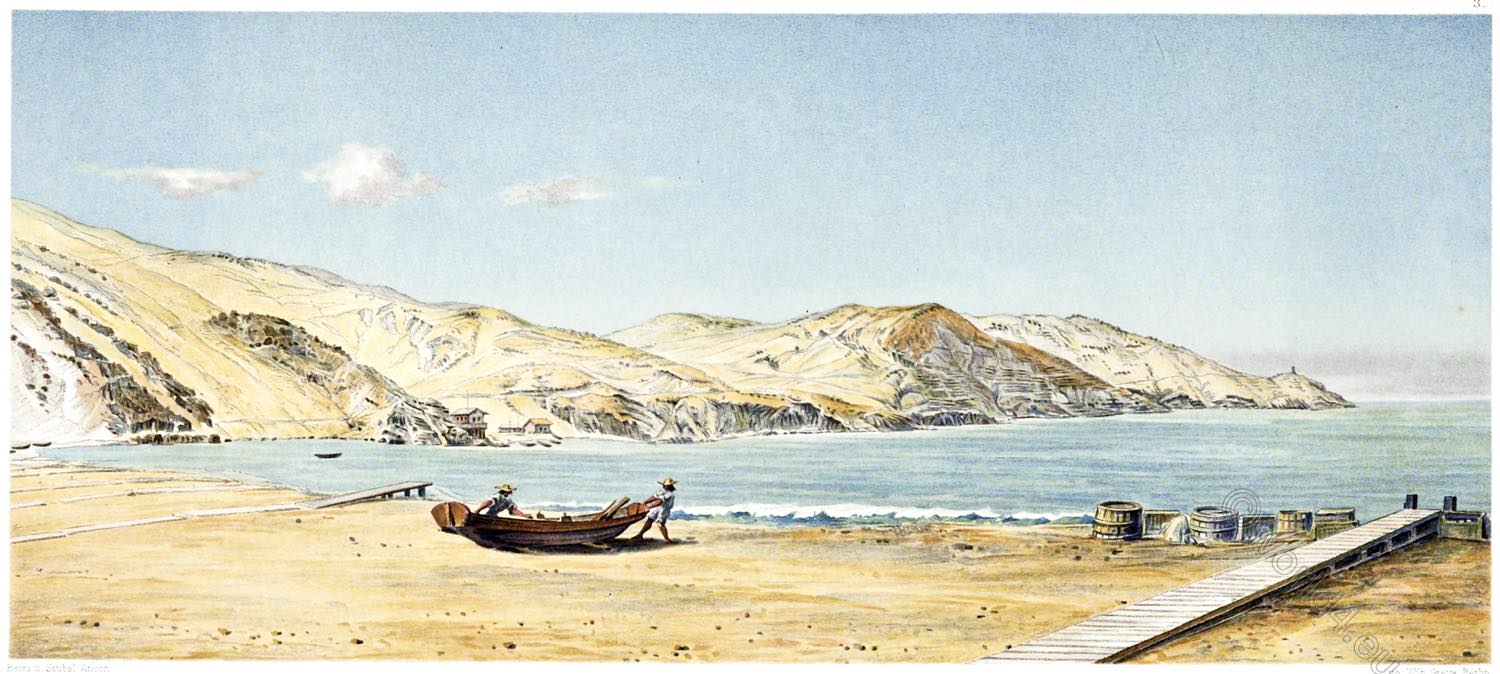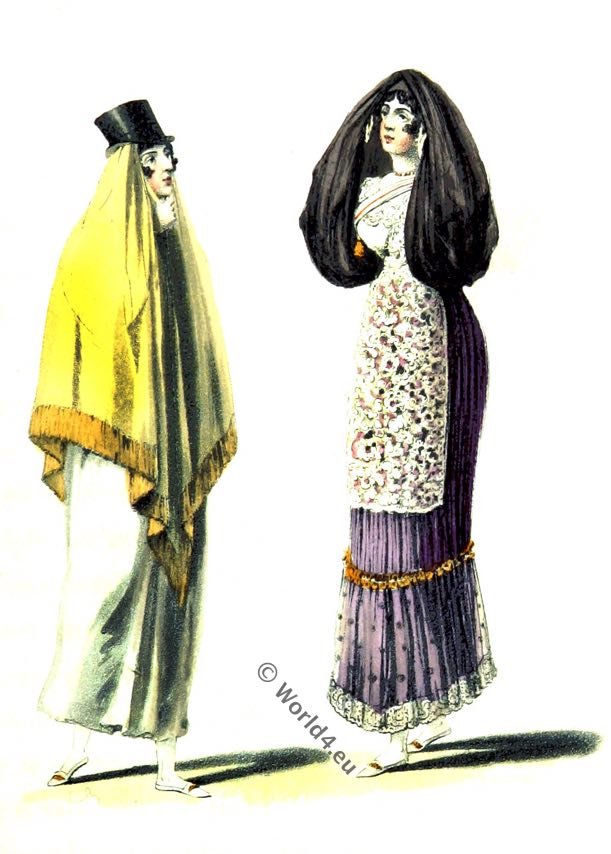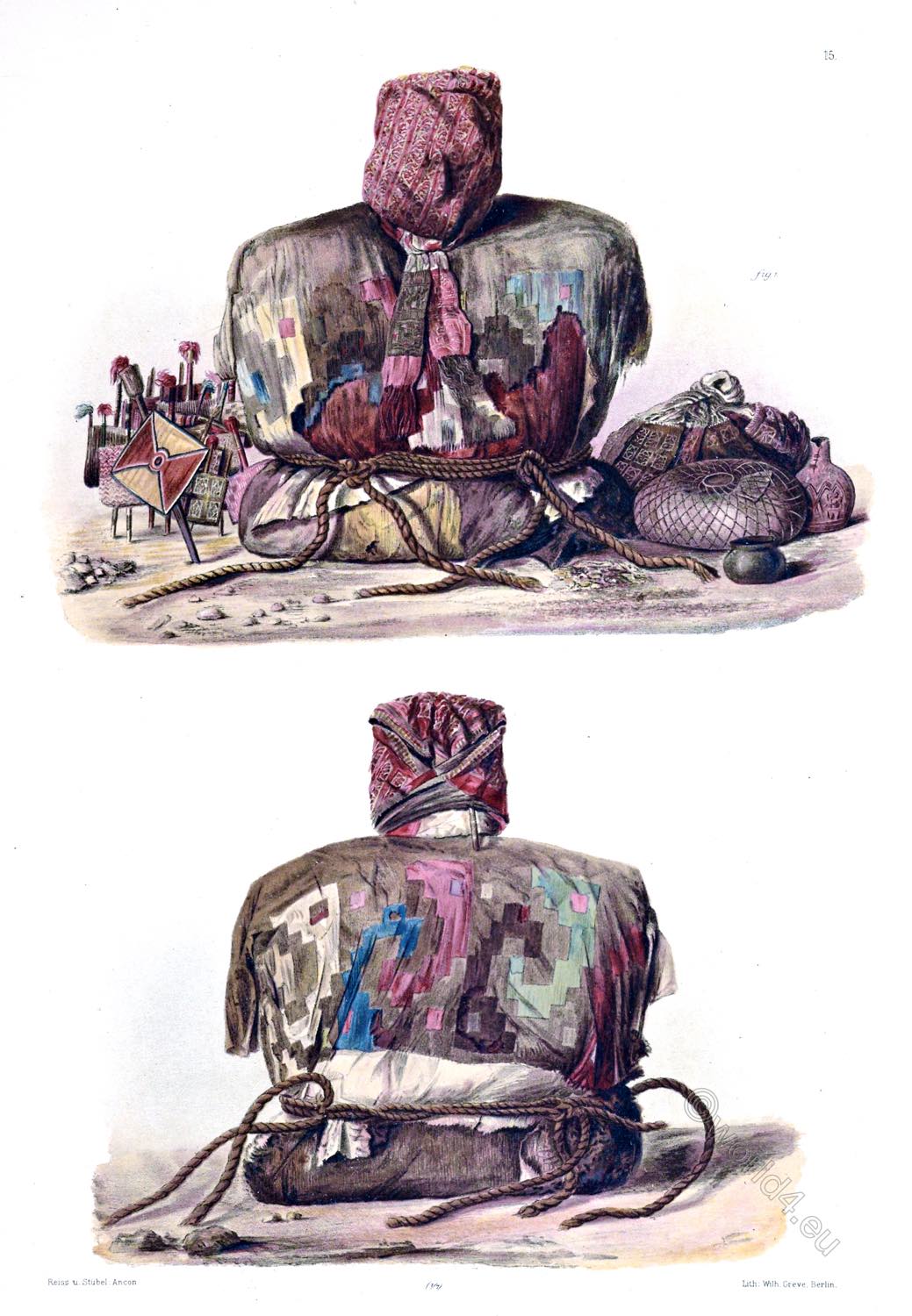Tapada limeña.
AMÉRIQUE. Tapada de saya. (Lima)
Tapada limeña was the name used in the time of the Viceroyalty of Peru and the early years of the Republic to designate the women of Lima who covered their heads and faces with comfortable silk shawls, leaving only one of their eyes uncovered. Its use began in the 16th century and extended well into the 19th century, that is to say, its use lasted for three centuries and was not only confined to the City of Kings, but also to other important cities in the region. In Lima, the custom remained until well into the Republic, when it was relegated by French fashions.
Source: Le Musée cosmopolite. Costumes actuels de tous les peuples, gravés sur acier par les premiers Graveurs de Paris. Paris, Ancienne Mon Aubert, ca. 1850-1860.







